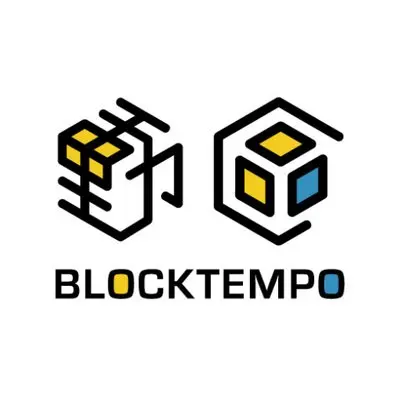Analyzing Sun Yuchen's Arbitrage Method: Buying PT Tokens with 33,000 ETH, What Are the Returns?
Author: DaFi Weaver, BlockTempo
On the 4th, Tron founder Justin Sun made a significant purchase of Pendle PT tokens, enjoying a low-risk arbitrage operation with an annualized return rate of nearly 20%, becoming the focus of community attention. This article will explain where the benefits of this operation come from, discuss the associated risks, and provide risk mitigation strategies for readers' reference.
Justin Sun's Arbitrage Strategy
First, according to on-chain analyst Yu Jin and Ai Yi monitoring on-chain addresses, Justin Sun's operations over the past two days are as follows (the image below shows Justin Sun's positions in Pendle):
A total investment of 33,000 ETH, all invested in Ethereum re-staking projects maturing on June 27, including:
· Ether.fi: 20,000 ETH bought 20,208.93 PT-we ETH;
· Puffer: 10,000 ETH bought 10,114.11 PT-puf ETH;
· Kelp: 3,000 ETH bought 3,025.91 PT-rs ETH.

Justin Sun's positions in Pendle | Source: Ai Yi
Taking Ether.fi as an example, this means that if Justin Sun holds until maturity, he can redeem an equivalent value of 20,208.93 ETH worth of we ETH (Note: this is not equivalent to 20,208.93 we ETH, as the exchange rate between we ETH and ETH is not 1:1, as shown in the image below), and how much we ETH can be exchanged for ETH depends on market conditions. For simple calculation, assuming the exchange rate of we ETH to ETH is 1:1, therefore if Justin Sun holds until maturity, he can earn a 1% return rate within 22 days, which is an annualized 17.33%.
Similarly, the annualized return rate for Puffer's investment is 18.93%; Kelp's is 14.33%. The total investment's annualized return rate reaches 17.54%.
Pendle Chinese community ambassador ViNc described that Pendle's PT is like short-term debt on-chain, enjoying characteristics such as good liquidity, redemption close to cash value (when viewed in ETH terms), short duration, and excellent risk-reward ratio. So, where does the yield of PT come from? This requires understanding the basic operation of the Pendle protocol.

The exchange rate of we ETH and ETH is not 1:1 | Source: 1inch
Sources of PT Yield
Pendle is a permissionless yield trading protocol that packages yield-bearing tokens into standardized yield tokens (SY, standardized yield tokens, e.g., we ETH → SY-we ETH, this wrapped version is designed to be compatible with Pendle AMM) and splits SY into PT (principal token) and YT (yield token).
PT represents the principal portion of the yield-bearing token before maturity, while the right to earn yield during this period is represented by YT and sold to other buyers. Since the monetary value of YT is separated, the principal portion (i.e., PT) can be sold at a lower price.

Pendle mainly has three ways to participate:
· Buy PT: PT allows holders to redeem the underlying asset after maturity and can be sold at any time. For example, 1 PT-we ETH purchased at 0.9 ETH can be redeemed for we ETH worth 1 ETH after the maturity date. The 11% appreciation between 0.9 ETH and 1.0 ETH is Pendle's fixed yield strategy. This is the strategy Justin Sun adopted.
· Buy YT: This allows holders to receive all yields and airdrop points generated by the underlying asset before maturity, which can also be sold at any time. For example, holding 1 YT-we ETH means having the right to claim all yields and points generated by 1 we ETH until the maturity date.
· As a liquidity provider (LP): LP's yield includes: PT yield + SY yield + ($ PENDLE emissions + pool trading fees).
Methods to Mitigate Price Risk: Borrowing and Short Selling
With attractive return rates, the risks of using Pendle mainly include smart contract risks, operational human risks, and price risks (in USD terms. If viewed in coin terms, the strategy of buying PT is risk-free).
To further mitigate price risk, specifically losses caused by price "declines," one can try to open short contracts on exchanges as a countermeasure, but this requires considering liquidation risks and funding rates. If successful, it can secure fixed returns, as illustrated below:
Entering the market at $3,800 to buy 1 ETH, in the Ether.fi market maturing on June 27, one can exchange for 1.01 PT-e ETH, meaning a net profit of about 0.01 ETH after maturity.
However, to mitigate the risk of ETH price decline, one can open a short position worth 1 ETH on the exchange, and upon maturity, simultaneously close the short position and sell 1 ETH. This way, in addition to recovering the $3,800 cost, one also gains a stable return of 0.01 ETH.
Another method is to borrow money to buy PT, based on Alvin's capital preservation strategy (this strategy was recently forwarded by Pendle's official account), which can be attempted as follows:
- Borrow 1 ETH on CEX/DEX.
- Use the borrowed ETH to buy 1.01 PT-e ETH.
- Upon maturity, redeem for e ETH worth 1.01 ETH and repay 1 ETH.
- The remaining ETH is the stable return, estimated at about 0.01 ETH, as explained above, depending on the market conditions of e ETH and ETH.
This strategy needs to consider whether the stable return can exceed the borrowing cost; otherwise, there may still be losses.









